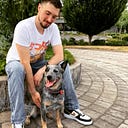First, let me explain what “Post Processing” is and does. Post Processing is the process of applying filters and effects on an image of a game. After the game renders its initial images, but before it can send those images to the monitor another rendering process occurs which then applies any filters or effects to that image.
Now let’s get started. To begin, you will need to download the “Post Processing” package from the Unity Package Manager which can be found by clicking Window>Package Manager
Now create an empty game object in the hierarchy and add the component “Post-process Volume” to that game object.
If you tick the “Is Global” box as true, then these effects will be applied to everything that is going to be viewed.
The “Priority” section of this component is used similar to the layering behavior within a sprite renderer and allows you to set each different instance of the “Post-process Volume” component to show over others.
Finally, at the bottom, you have “profile”. Select “New”. Notice that it automatically applied the new profile to that box. If you left-click on the newly added profile within that box it will show you where it is located by selecting it within the project menu.
As you see, there should be a new folder in your project menu with your scene name followed by “_Profiles”. By adding a profile to your scene/“Post-process Volume” component, you allow yourself to create “Effects”.
If you look at your “Post-process Volume” component you will see a new button at the bottom called “Add Effect”. If you click this, you will see a drop-down menu appear with all of the various effects that you can apply to your game!
Now, the last thing I am going to go into is the “Post-process Layer” component. This, you’ll want to add to your camera in order to allow the filters and effects that you’ve just created to apply to it. But in order for you to connect the effects that you’ve created within your “Post-process Volume” component to the “Post-process Layer” component, you’ll have to create a new “Layer”.
Similar to a “Tag”, you can also create “Layers” within Unity. In order to apply the post-processing to the “Post-process Layer” component on your camera, you will need to create a new “Layer”. Luckily, this isn’t very complicated and can be done similar to how you would create a new tag!
Follow the example below to see how to create and apply this layer to both your “Post-process Volume” component and “Post-process Layer” component.
